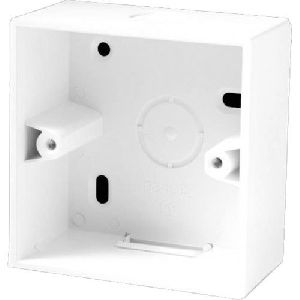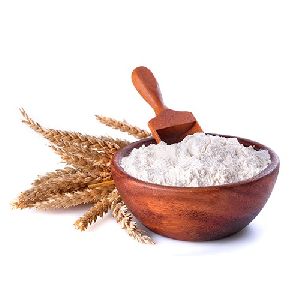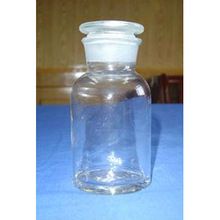
Plastic Electrical Box
35 Per Box
500 Piece (MOQ)

Pet Bottles
4 Per Piece
1000 Piece(s) (MOQ)
All size bottel available 50ml 100 ml 180 ml 200 ml 250 ml 300ml 450ml 500 ml 1ltr &5LTR JAR & JERICAN
Best Deals from Plastic Bottles

sweet box
Get Price Quote
1000 piece (MOQ)

Wheat Flour
28 - 30 Per Kilogram
2 Tons (MOQ)

PET Jars and Bottles
Get Price Quote
Polyethylene terephthalate (sometimes written poly(ethylene terephthalate)), commonly abbreviated PET, PETE, or the obsolete PETP or PET-P, is a thermoplastic polymer resin of the polyester family and is used in synthetic fibers; beverage, food and other liquid containers; thermoforming applications; and engineering resins often in combination with glass fiber.Depending on its processing and thermal history, polyethylene terephthalate may exist both as an amorphous (transparent) and as a semi-crystalline polymer. The semicrystalline material might appear transparent (particle size < 500 nm) or opaque and white (particle size up to a few microns) depending on its crystal structure and particle size. Its monomer (bis-β-hydroxyterephthalate) can be synthesized by the esterification reaction between terephthalic acid and ethylene glycol with water as a byproduct, or by transesterification reaction between ethylene glycol and dimethyl terephthalate with methanol as a byproduct. Polymerization is through a polycondensation reaction of the monomers (done immediately after esterification/transesterification) with ethylene glycol as the byproduct (the ethylene glycol is directly recycled in production).The majority of the world's PET production is for synthetic fibers (in excess of 60%) with bottle production accounting for around 30% of global demand. In discussing textile applications, PET is generally referred to as simply "polyester" while "PET" is used most often to refer to packaging applications. The polyester industry makes up about 18% of world polymer production and is third after polyethylene (PE) and polypropylene (PP).UsesSailcloth is typically made from PET fibers also known as polyester or under the brand name Dacron; colorful lightweight spinnakers are usually made of nylon.PET can be semi-rigid to rigid, depending on its thickness, and it is very lightweight. It makes a good gas and fair moisture barrier, as well as a good barrier to alcohol (requires additional "barrier" treatment) and solvents. It is strong and impact-resistant. It is naturally colorless with a high transparency.Plastic bottles made from PET are excellent barrier materials and are widely used for soft drinks (see carbonation). For certain specialty bottles, PET sandwiches an additional polyvinyl alcohol to further reduce its oxygen permeability.Biaxially oriented PET film (often known by one of its trade names, "Mylar") can be aluminized by evaporating a thin film of metal onto it to reduce its permeability, and to make it reflective and opaque (MPET). These properties are useful in many applications, including flexible food packaging and thermal insulation, such as "space blankets". Because of its high mechanical strength, PET film is often used in tape applications, such as the carrier for magnetic tape or backing for pressure sensitive adhesive tapes.Non-oriented PET sheet can be thermoformed to make packaging trays and blisters. If crystallizable PET is used, the trays can be used for frozen dinners, since they withstand both freezing and oven baking temperatures.When filled with glass particles or fibers, it becomes significantly stiffer and more durable. This glass-filled plastic, in a semi-crystalline formulation, is sold under the tradename Rynite, Arnite, Hostadur, and Crastin.While most thermoplastics can, in principle, be recycled, PET bottle recycling is more practical than many other plastic applications. The primary reason is that plastic carbonated soft drink bottles and water bottles are almost exclusively PET. PET has a resin identification code of 1. One of the uses for a recycled PET bottle is for the manufacture of polar fleece material. Among its many uses, companies such as English Retreads use the PET material to line their products. It can also make fiber for polyester products.Because of the recyclability of PET and the relative abundance of post-consumer waste in the form of bottles, PET is rapidly gaining market share as a carpet fiber. Mohawk Industries released everSTRAND in 1999, a 100% post-consumer recycled content PET fiber. Since that time, more than 17 billion bottles have been recycled into carpet fiber.[4] Pharr Yarns, a supplier to numerous carpet manufacturers including Looptex, Dobbs Mills, and Berkshire Flooring,produces a BCF (bulk continuous filament) PET carpet fiber containing a minimum of 25% post-consumer recycled content.PET, as with many plastics, is also an excellent candidate for thermal disposal (incineration), as it is composed of carbon, hydrogen, and oxygen, with only trace amounts of catalyst elements (but no sulfur). PET has the energy content of soft coal.PET was patented in 1941 by the Calico Printers' Association of Manchester. The PET bottle was patented in 1973 by Nathaniel Wyeth.One of the most important characteristics of PET is referred to as intrinsic viscosity (IV)The intrinsic viscosity of the material, measured in deciliters per gram (dℓ/g) is dependent upon the length of its polymer chains. The longer the polymer chains, the more entanglements between chains and therefore the higher the viscosity. The average chain length of a particular batch of resin can be controlled during polycondensation.The intrinsic viscosity range of PETFiber grade0.40 – 0.70 dℓ/g Textile0.72 – 0.98 dℓ/g Technical, tire cordFilm grade0.60 – 0.70 dℓ/g BoPET (biaxially oriented PET film)0.70 – 1.00 dℓ/g Sheet grade for thermoformingBottle grade0.70 – 0.78 dℓ/g Water bottles (flat)0.78 – 0.85 dℓ/g Carbonated soft drink gradeMonofilament1.00 – 2.00 dℓ/g[edit]Drying

Reagent Bottle
Get Price Quote

Alta Mahawar
Get Price Quote

Printed Packaging Box
Get Price Quote
Rice, a central part of many cultures, is the most widely consumed staple by more than half of the world’s population. It is also one of the most vital cereals for human nutrition providing more than 20% of the global energy dietary supply.

jar
Get Price Quote
jar, Bottles, plastic moulded items

Burger Box
Get Price Quote
Burger Box, Bakery Products, bun, Cookies, Cake, bun and burger, Biscuit

Hand Sprayer
Get Price Quote
Hand Sprayer

Corrugated Box
Get Price Quote
Corrugated Box, Printed Mono Cartons, rigid boxes, Liner Carton

Pet Jars
Get Price Quote
Pet Jars, Pet Bottle Balled and Bottle Scrap

HDPE Spice Jar
Get Price Quote
HDPE Spice Jar

Printed Packaging Box
Get Price Quote
Printed Packaging Box, Chocolates, Confectionery Products, Masoor Pulse

Tiles
Get Price Quote
Bathroom Accessories, Urinals, Stone Sinks, Sanitary Ware, PVC Pipes

Packaging Box
Get Price Quote
Packaging Box, Carton Box, Printing Box

Tiles
Get Price Quote
hand made tiles, printing tiles

Tiles
Get Price Quote
Bath Tub, Building Materials, Wooden Door, Sanitary wares, Wash Basin

Printed Packaging Box
Get Price Quote
Printed Packaging Box, Semolina, Broken Wheat, Refined Wheat Flour

Printed Packaging Box
Get Price Quote
Printed Packaging Box, Bajra, Garlic, Ladies Stoles, rumal products

Printed Packaging Box
Get Price Quote
Printed Packaging Box

Pet Bottles
Get Price Quote
Pet Bottles, canvas clothes, HDPE Fabric, tarpaulin cloth

Fan Box
Get Price Quote
Fan Box, electrical concealed switch, Modular Boxes, metal sheet

Tiles
Get Price Quote
curve stone, interlocking paver, Manhole Frame, Rcc Hume Pipe

Digital Printer
Get Price Quote
Digital Printer, Sign Board, LED Acrylic Letters, Canopies, neon sign board

Tiles
Get Price Quote

Tiles
Get Price Quote
cp pipe fittings, GI Pipe Fittings, Pipes, PPR Pipe Fittings, swr fittings

Printed Packaging Box
Get Price Quote
Printed Packaging Box, Chocolate, Flour, Fruit Juices, Noodles, Pasta